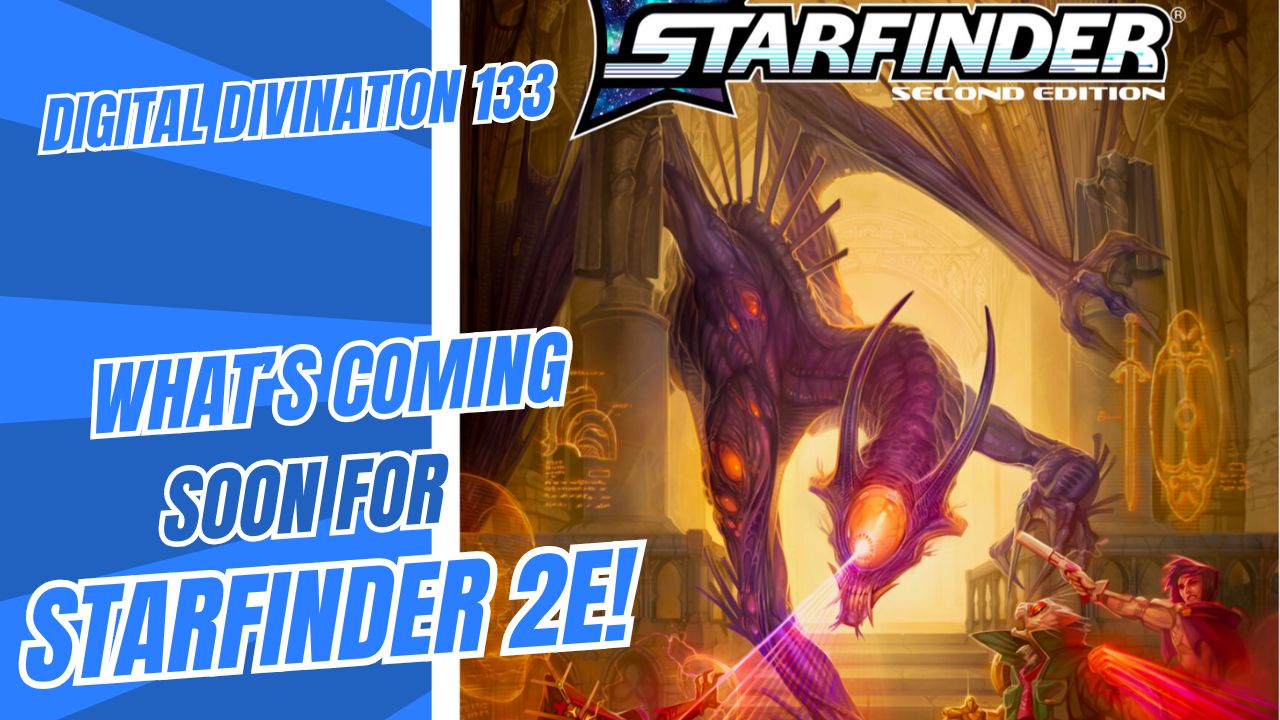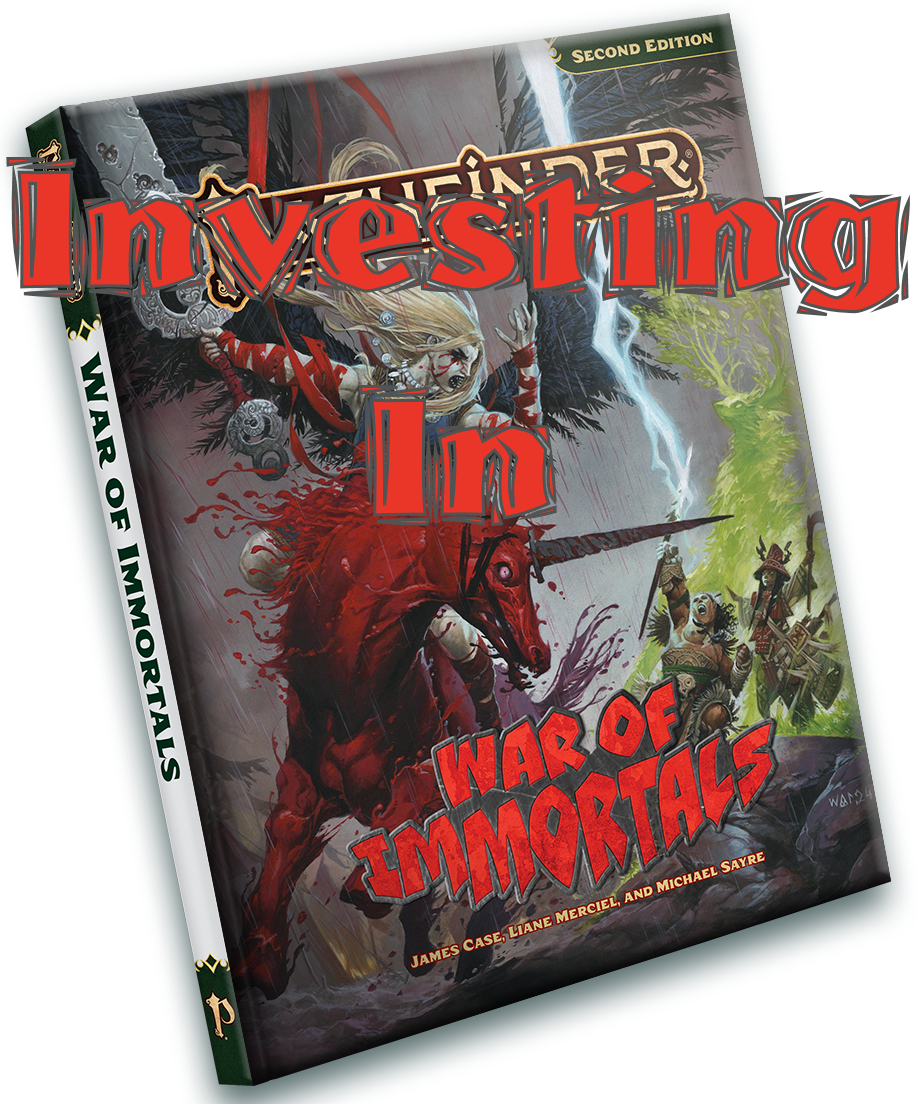There comes a point in D&D where class features, feats, and abilities aren’t enough on their own. Your character needs magic items. They synergize a party of adventurers. The warriors must admit they need magic to keep up with the casters. The casters must admit they need items to keep up with the warriors. The great divide between classes overcome. Magic items also add further dimensions to characters. Take two seventh level human rogues who have taken the same feats and have the same stats and weapons, the only difference is that one has a ring of invisibility and the other a ring of fly. These two characters suddenly play extremely differently.
Wizards of the Coast’s website (www.wizards.com) advertises that the Magic Item Compendium (MIC) has over 750 magic items, approximately 500 of which are brand new. That overshadows the Dungeon Master’s Guide’s magic item selection more than three to one. But the DMG selection covers the basics so well, is there any need for that many new items?
At a Glance
This cover has me torn. One the plus side, the character on the cover is loaded with magic items. He is wearing and carrying fourteen potentially magic items without appearing cluttered or garishly coloured. And the fiery craters bursting behind him make for a nice background that hints at the powers of his items.
On the down side, I like consistency. If this is a sister sourcebook to the Spell Compendium, why go with such different styles of covers. The Spell Compendium has the faux ancient tome look of the Core Rulesbooks. The Magic Item Compendium has the portrait window style of the Complete series. It doesn’t make the cover any less eye-catching, but it does make the series less interesting on a shelf.
The artwork inside is a mix of original art and reprints from older sourcebooks, which makes sense given the content is also a mix of original and reprinted.
The Book does contain one of my new favourite pieces of art. Spread across the bottom of pages 76-77 are Regdar and Tordek trying on boots. They are each surrounded by a dozen bizarre and interesting magic boots. It’s a hoot seeing these characters normally portrayed in the heat of battle now doing something as mundane as shoe shopping. The best detail of all is how well placed the boots around Regdar are compared to the mess Tordek has left.
Highlights
Organized Entries
Finally, a new format for magic item entries. Gone is the confusing mix of flavour text and mechanics followed by an incomplete list of statistics. Magic items are now laid out like spells, with all the important basics first and in bold (including weight and body slot) followed by italicized fluff and then all the crunch you need. It’s so simple, and shows the game designers accepting that in a game, a statistics block speeds up play.
Magic Item Sets
This is brilliant. Magic items, each individually powerful, that gain new powers when combined. For example, a Crown of Flames provides +2 enhancement to Charisma and can summon a fire shield. Great on its own. But when combined with the Phoenix Cloak, Raptor’s Mask, and Talon Scepter, on top of all the powers each of those items provides on its own, combined they unlock fire immunities and healing powers.
This will mean that a character will, on occasion, have to choose between a magic item already owned and one from the same magic item set that takes up the same spot. But the potential for adventures based around tracking down the various items stirs my imagination.
Hopefully the next step will be items that can be spread out across a party instead of all worn by the same character. Five elemental or organ based rings whose powers combine to summon an environmentally conscious superhero. A series of figurines of wondrous power that form a powerful construct or golem. Treasure distribution is easier on the DM if everyone in the party gets a piece.
A Plethora of Well-Thought-Out, Well-Executed Magic Items
Cover to cover, this sourcebook delivers on its promise. But this isn’t just more of the same. Whole new concepts like relics and psychoactive skin show the game’s continued potential for growth. The new synergy armour and weapon property improves the creating and advancing weapons rules from the DMG.
I do have to admit a little ignorance here. For whatever reason, I never paid much attention to magic items in sourcebooks after the DMG, besides the Weapons of Legacy. The original set of magic items encompassed enough to satisfy me. I’m not sure exactly what is being introduced here and what is reprinted, but it is all good material.
Low Points
Hard to Navigate
There are a lot of magic items in this book, finding the right one for your character is tough. There is an index that includes all MIC and DMG magic items, but reading through even it is daunting. Especially if you have no idea what item you want. And sometimes even when you do. Just now, while looking up an item for Juicy Bits, I looked up Belt of Healing, only to discover I was actually looking for the Healing Belt.
Reused Artwork
My only objection to the reused artwork is anything taken from Magic of Incarnum (MoI). For those unfamiliar, Magic of Incarnum is based around the idea of forging temporary magic items out of the essence of souls. These Soulmelds are not actual items but manifestations. But they look like magic items, so I guess Wizards of the Coast felt it was better to reuse inappropriate artwork than commission something new. The worst case of this is the heading for Chapter Three: Clothing, which uses the exact same heading as Chapter Four: Soulmelds from MoI. Given that all sourcebooks have a budget and that MoI was not a fantastic seller by my estimation, I admit that it’s better to reuse old art that not many people have scene than pay for new artwork at the expense of something else in the book. But I reserve the right to call WotC on it.
Changes to Existing Material
Reprinting material is unacceptable in a lot of cases, usually putting obscure or overlooked existing rules into a new sourcebook that fits the theme. In a compendium it’s mandatory, since it’s supposed to be the ultimate collection. Some formatting changes are welcome, but changes to price and ability should be reserved for only completely broken items. The excuse that changes were made for the sake of balance doesn’t hold water since all content is supposed to be balanced when it’s first released.
Juicy Bits
The Healing Belt is like wearing three replenishing potions of Cure Light Wounds. It’s completely affordable and handy for all characters to have. Skin of Ectoplasmic Armour has the armour bonus of heavy armour but counts as light armour. And the additional page for your character sheet in the back helps you keep track of you character’s magic items.
Personal Experience
My first experience with the Magic Item Compendium was using the random treasure chart. I was smitten with having all magic items represented on these charts and looked forward to what would turn up. What I didn’t anticipate was the much larger chance that the item rolled was completely useless for my party.
My current character, the Scales of St. Cuthbert, a human Hexblade, bought the Hexblade-specific item Hexbands, and both of their abilities been come to good use.
Overall
Don’t expect any casual reading out of this book, but the Magic Item Compendium has something for everyone. It’s very aware of how the game has changed since the Dungeon Masters’ Guide was released. It’s not without its flaws but this is a great book and makes a great purchase.
If You Liked This Book…
It’s sister sourcebook, the Spell Compendium, isn’t as useful for all characters, but more useful to spellcasters than the MIC.




Leave a Reply